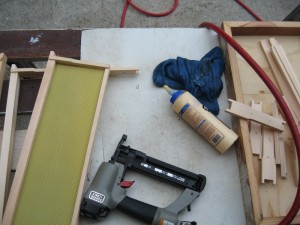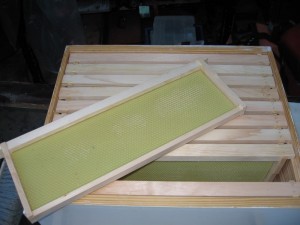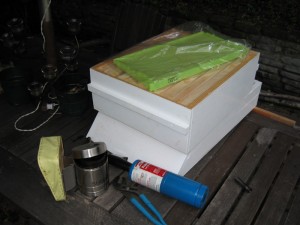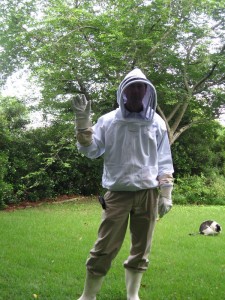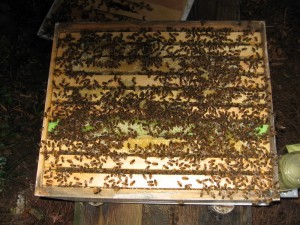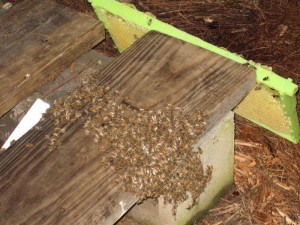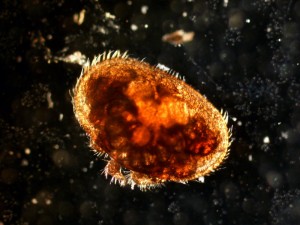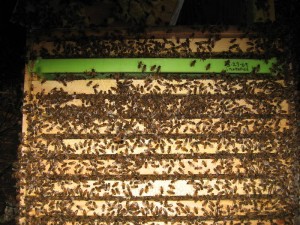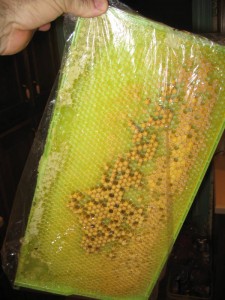After recovery from the last inspection, this hive seemed to prosper, and I thought it was probably time to add a “super”, a hive body above the brood box which the hive uses to store honey. Typically, the first box is retained on the hive as a food supply for the bees during the winter; any additional supers could be used for harvesting honey, although that is not usually done the first year of the hive. This would be my first inspection without my mentor; I figured it was probably time for this. First a few preparations:
I decided to swap out the drone frame since I was already going to be manipulating the hive, even though it’s best to leave it for a full four weeks before changing. The spout has fallen off my homemade bee smoker (it was only a temporary attachment); it seems to work about as well without it and will not be replaced.
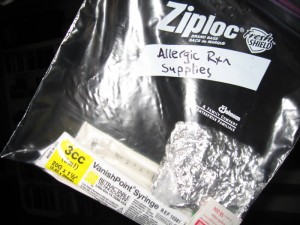
Bee-sting supplies. The aluminum foil is used to protect the medicines from light. My office staff is probably giving me an Epi-Pen for my birthday – my health (and their job security) is always their prime concern.
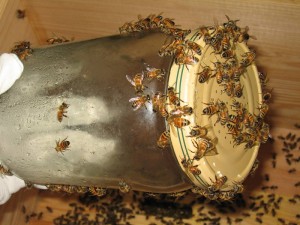
The bees are still avidly taking sugar water, requiring daily refills. I am going to add another bottle like this one.
Although I carefully inspected the drone frame (to look for the queen) as it was being removed, I should have done a more thorough job of brushing bees off the frame. As you can see here, the bees have moved from the frame to the stand; they slowly moved under the hive bottom board, where they spent the night.
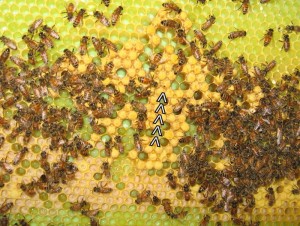
A view of the drone frame, partially filled in with larvae. Note the small brown spot off the end of the arrow; it’s probably a female Varroa destructor mite (The males are white and smaller).
The Varroa mite lays its eggs in the larval cells just before the cell is capped. Developing mites feed on the bee larvae. Males and females copulate in the cell; the male dies, but pregnant females emerge from the cell along with their bee host and ultimately seek another cell to repeat the cycle. I picked off the mite, fixed it in alcohol, and mounted it on a slide for a microscopic view.

